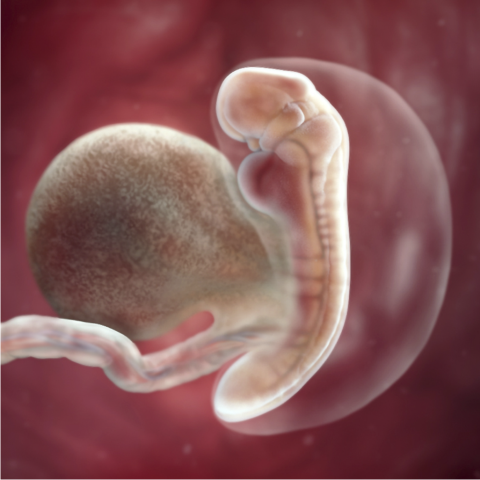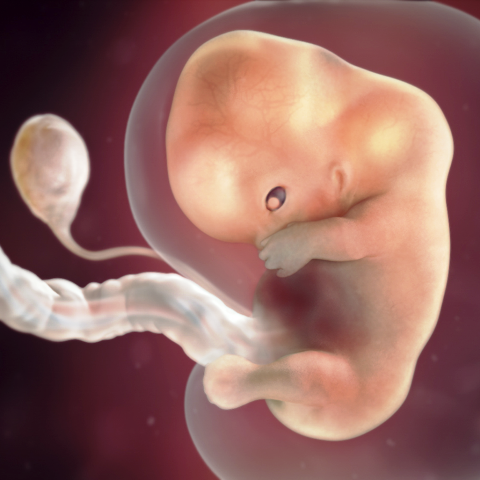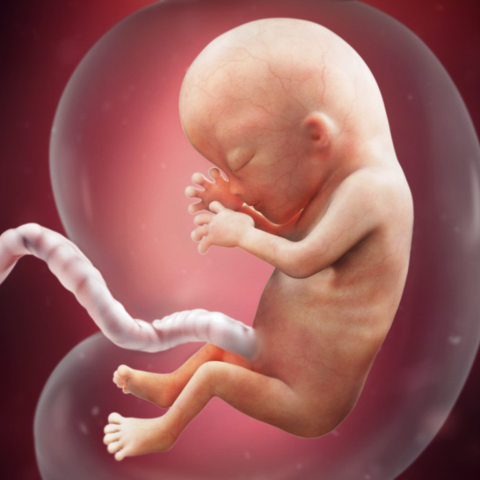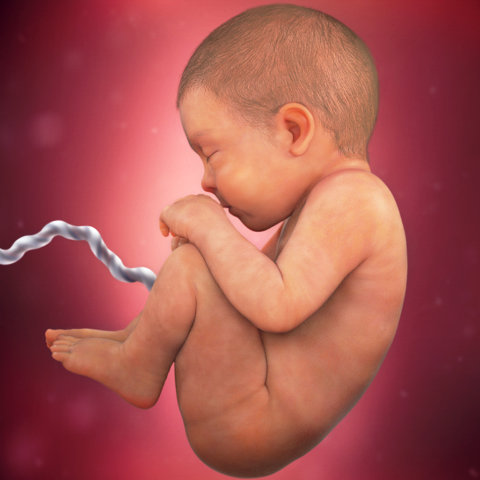Pregnancy Stages - Mother's e-Guide
Main menu:
Antenatal
First Trimester (The Beginning)
Cell: the smallest unit of life – 1 to 30 days
Every life developed from a cluster of cells to form a living being. The baby begins to grow also from a number of cells that float in the uterus after conception must have taken place. Conception occurs when spermatozoa penetrates into an egg released from female ovary. The conception makes the egg to become fertilized as cells. The cells are known as Zygote ready to be attached to the uterine lining. After the attachment, Zygote is called Embryo which later develops into a foetus. The cells disintegrate to many groups of cells for different purposes which include: forming part of the baby’s body - skin, bones, tissues etc., formation of placenta and the baby’s home (i.e. amniotic sac) in the uterus. The sac is filled with liquid for the baby’s safety and warmth etc.
At the beginning of pregnancy, the uterus is very small equivalent to the size of a closed fist. As the foetus develops, the uterus stretches. The umbilical cord grows out from the placenta as a connector and transporter between the baby and the placenta itself. Their main function (umbilical cord and placenta) is for nourishment (to the baby) while the placenta singly protects the fetus by filtering out germs or harmful chemical drugs that may endanger the life of the baby. The cord helps to transport oxygen and food nutrients needed by the foetus from the mother. It also transports waste products from the baby which are then sucked up and discarded by the mother’s body. The growth of the baby in the first month comes with the development of a big head, a body and a tiny tail which eventually disappears to form part of the baby’s backbone.

Almost all body organs will also begin to form and by the end of the first month, the embryo would have developed a functioning heart, pumping and circulating blood. The embryo at this very beginning is only one fourth of an inch in size.
Second Month: 31 – 60 days
Changes are going on daily in the life of the embryo. Although it is still small – one inch long, weighing about 1/30 of ounce but it has a living cell. The size of the embryo at two months can be compared to a kidney bean. The face is forming in bits with noticeable features of eye, ear, nose and lips. The neck as well starts to develop and soft cartilages that eventually turn to bone for skeletal structure form by the end of the second month. Other noticeable formations are: legs, feet and toes, hands and fingers; all by the end of the second month. However, with the main organs formed, the heart starts to pulsate in the right order while blood flows through the vessels. The stomach is by this time active and the kidney starts the filtration of metabolic waste from the blood. From this point onward, the only changes from the organs are an increase in their size and the advancement in their functions.

Image: Embryo with noticeable features
Third Month: 61 – 90 days

Image: The foetus with almost all features
The baby is no more an embryo but a foetus with a body that is almost totally formed having: a heart, intestine, lungs, brain, heart, bladder and the nerves etc. Movement is momentary and will remain in that low state until the end of the third month; by that time, vitality will reflect in the movements: jerking, turning, kicking etc. The graceful and purposeful movement will be felt by the expectant mother at the fourth month. At the moment, the baby is still small like a lime fruit; weighing less than one ounce. The breathing is not yet fully developed but he gets oxygen which is essential for growth from the mother’s blood through the umbilical cord. In the same manner, the fetus begins to feed on nutrients from the mother and same time begins to drop urine into the amniotic sac.
Fourth to Sixth Month (180 days) – SECOND Trimester
The fourth month is marked with a significant growth in weight and strength. The foetus also gains more height, approximately five inches. ‘Quickening’ may be felt by the pregnant mother which signals an active life in the womb that is steadily ‘human-becoming’. The activeness is the movement of the baby; hence the mother may notice the first faint or slight fluttering in her uterus/ abdomen. In contrast, the active movement becomes more pronounced by the fifth and sixth month. Sex of the baby can be distinguished by the fifth month.

At this stage, the baby can even somersault freely. The umbilical cord is not affected, it remains unknotted. Hair also known as lanugo starts to grow on the arms and legs and at six month, the foetus develops hair on the head. The eyebrow develops as well while the eyelids are still fused. At the point of delivery, the new-born is covered with the greasy vernix caseosa. It is a creamy and fatty substance produced by small glands in the skin for the protection of the skin.
Seven to Ninth Month (270 days) – THIRD Trimester

The third trimester is filled with gaining of more weights in which while at 7 months, the foetus weighs about 2 pounds of fourteen inches in size. This is in contrast to the ninth month when the baby weighs around 7 pounds, (approximately 3300g) with a size of twenty inches in length i.e. 50cm. Often times, boys weigh more than the girls; being about 100g heavier than the girls. There is always a variation in baby’s birth weight; a new-born may weigh as little as 2500g or as much as 4500g. In rare occasion, the baby may even weigh more. At the ninth month, its skin is smooth and the lanugo cleared off except for the vernix which is later washed off after birth. The head is covered with a good amount of hair; bones of the head are intact with the fontanel as the skull is not yet solid. Despite this formation, the head is still in the right proportion to the body.

Image: Baby in full size
In the last trimester, the foetus is prone to sucking such as the thumb. Convincingly, this practice will also aid sucking of the breast as means of feeding after birth. The baby in this last stage also gains more fat and strength. They are needed for the baby to be able to live on its own outside the confinement of the womb. But while in the womb at the last month, movement is very little. This is because the full size of the baby has taken up virtually the entire space in the uterus. Most babies settle ‘head down’ – a cephalic presentation that makes them ready for birth.
Home Page | Antenatal | Postnatal | Neonatal | Healthy Tips | FAQ | Trainers Pack | Extras | General Site Map

